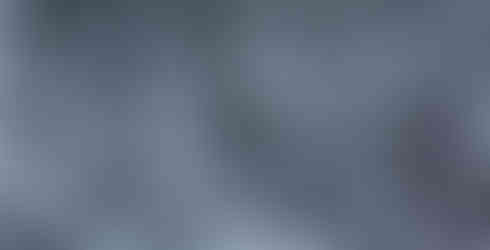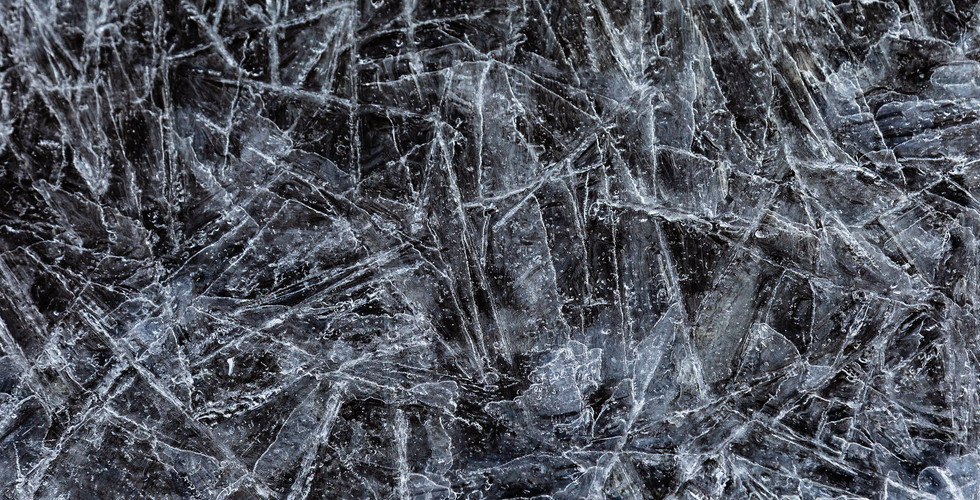One of my favorite photography adventures involves going out to look for ice. I’ve done it often enough that I know the conditions that produce the best results for my aesthetic. I’m looking for shallow water. If the water is running, it will produce some interesting shapes and forms, including bubbles. Sometimes you can find shapes that have dimension. Photography is a two-dimensional medium. It is wonderful to find shapes with dimension. The ambient air temperature needs to be below freezing to form ice. It can’t be snowing, because the snow will cover the ice. I always prefer leaves in the water below the ice because they provide color in what would otherwise be monochromatic images. If the leaves have preserved their fall colors in the water, the results can be spectacular. Being able to see leaves is another reason the water needs to be shallow.
There is a spot at Highbanks Metro Park that offers the perfect subjects for what I want to shoot. I just have to hope that a rambunctious family hasn’t arrived just before me and stomped all my ice into oblivion. It happens.
There is a method for shooting ice, as well as many other abstracts. One of my favorite photography courses was close-up and macro photography. My instructor is a professional photographer who is an excellent technician. He’s also an excellent teacher. He knows what he’s doing, and he knows how to describe his approach and techniques in detail. I consider him a mentor. We see things in very similar ways. When I look at his photographs, his perspective so often feels familiar to me.
There are times when a blurry image is acceptable and in some cases the blur actually enhances the story. If you are showing movement, blur is an excellent tool. If you are shooting a subject and you want it to be the focus of your image, blur or bokeh or an out-of-focus background is a good separation technique. If you are shooting an abstract, it is almost always the case that you want the image tack sharp from edge to edge. The way you achieve this is to keep the face of the lens precisely parallel to the subject you have framed in the camera. I’ve seen photographs of my instructor shooting ice. His tripod is in the water, he’s in the water, and he has his lens perpendicular to the subject. A tripod helps to ensure that there will be no camera shake when the photograph is taken. Using a tripod also helps a great deal if you are shooting in the woods, where creeks are often found, and you need to shoot at lower shutter speeds, trying to keep the ISO as low as possible.
When I am shooting ice, I rarely use a tripod and I never go into the water. I don’t use the tripod because I am lazy. If I was a professional photographer and trying to sell prints of my work, I would have more motivation to not be lazy. Shleping a heavy tripod around in the woods is just too much work for me. It is a horrible admission for a photographer, but it is honest. Another reason I don’t go into the water to get the lens parallel to the subject is that I take multiple images from an area of ice. When I am shooting ice, mud or sand, I can often find very different possibilities for images just inches away from each other. I’ve learned the hard way that once you find a great prospect for abstracts, you have to approach the area strategically and methodically. For the most part, I’ve learned how to make my way through an area without putting a footprint in the middle of a good image. I look at an area and I constantly remind myself not to step on my next shot. Finally, I don’t go into the water to shoot ice because I’m not allowed to get wet.
Abstracts of ice, sand or mud don’t just exist in nature as a “framed” subject. Beyond the technical issues, the art of seeing these abstracts is being able to frame the image out of the whole that exists in front of you. I shoot most often looking through the viewfinder, as opposed to shooting in ‘live view’ looking at the back of the camera. That derives from habit more than anything, because there are advantages to shooting in live view. When I look through the view finder, I try to create what will be a final abstract image. I’m going to work the raw image on my computer, but in my camera, I work at getting the contents of the image the way I want it. If I do any cropping of the image, it has more to do with removing blurred portions as opposed to improving the framed subject. As these abstracts often involve repeating patterns, the sacrifice of part of the image to remove blur outweighs the loss of subject. If I was allowed to get wet, I wouldn't have blur. The photographs really do need to be as sharp as possible.
I am totally mesmerized by seeking out and shooting these abstracts. I was once on a beach in Gloucester at low tide and found one of the most amazing combinations of patterns in sand and mud with absolutely perfect lighting conditions. Many of the abstracts I shot that day had dimension and the light was so amazing that some of the images appear to glow. I was on the beach for about four hours in the early morning taking photographs. There were homes adjacent to the beach and as I was walking back to our hotel, it occurred to me that there were likely people who could have been watching me for all that time with my camera pointed directly down into the ground – with a beautiful ocean on a beach directly in front of me. I’m sure they thought I was nuts, and perhaps I am.
You can see my photographs from Good Harbor Beach from this link. It is a Flickr album.
Some of the images are shown in a slide show and some are displayed as individual photographs. Please look for the arrow on the side of the first photograph to identify a slide show. Thank you.
These are bubbles under the ice.

This just looked other-worldly to me.


I know. This isn't ice. On this trip to Highbanks, I also saw abstracts in trees and I wanted to capture and share. These images are cropped because as the tree rounds on the edges, the focus becomes soft. I cropped off the edges that were not sharp.













































Comments